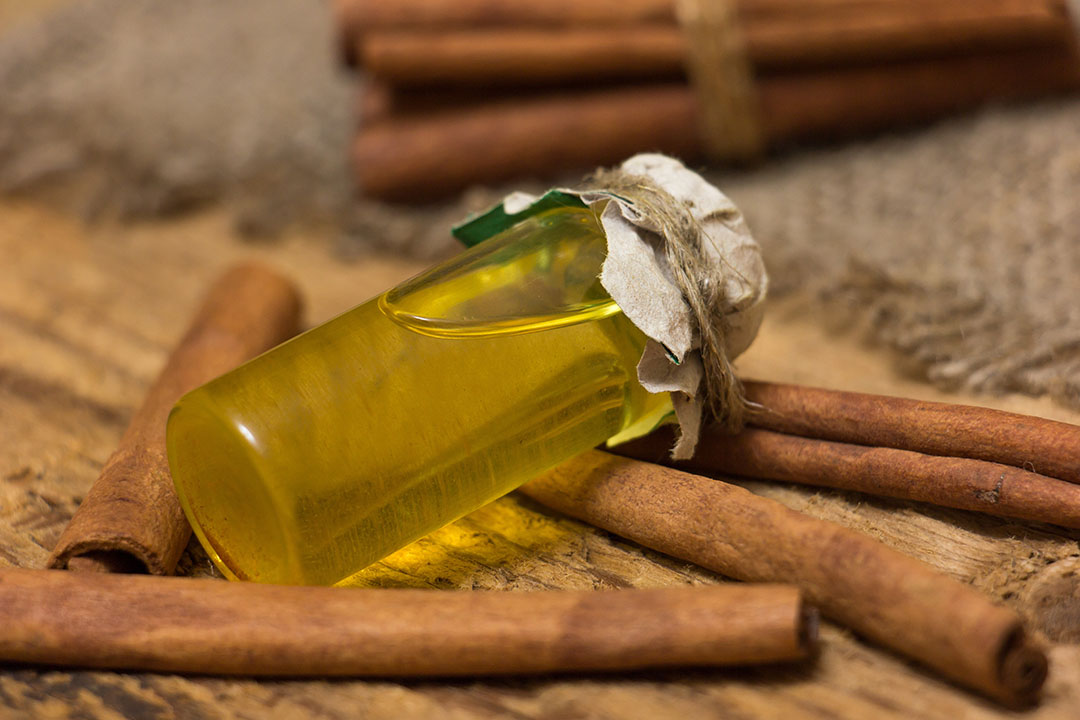Bulls respond well to essential oils in diet

The addition of plant extracts and essential oils can be beneficial as one of the tools to increase animal health and hence reduce antibiotics. A study looked at the effect of phytogenics in young bulls.
Essential oils (EOs) are considered potential natural substitutes of antibiotics, improving the performance, the feed efficiency and preventing future health damage to consumers, derived from the antibiotics residues. Therefore, they are an alternative for optimising beef cattle production systems. The use and effects of EOs and their components on ruminal fermentation in vitro have been previously studied by others researchers (Chaves et al., 2008, Chaves et al., 2011). However, beef cattle performance in vivo has scarcely been studied in relation to in vitro research.
Clove and cinnamon essential oils
This is why a group of Brazilian and Spanish researchers evaluated the animal performance, temperament, feeding behaviour and carcass characteristics of 40 young crossbred bulls (½ Brown Swiss – ½ Nellore) at 10 ± 2.2 months of age with an average body weight of 219 ± 11.7 kg without (control) the addition or with different levels (3.5 or 7.0 g/day per animal) of clove or cinnamon essential oils (EOs) in the diet. The finishing period in the feedlot was 187 days. The EOs (clove and cinnamon) were select according to a previous study (Biondo et al., 2017) that demonstrated its higher antioxidant power. In addition, clove and cinnamon EOs had also showed antimicrobial activity, affecting the ruminal microorganisms (Chaves et al., 2008, Patra and Yu, 2012, Patra, 2011).
Better performance and feed intake
Animal performance was higher (P < 0.05) in the group with EOs (both levels) than in the control group diet and increased linearly when EOs was added (P ≤ 0.05). The feed intake of dry matter and other nutrients was higher and increase linearly (P < 0.05) in young bulls fed with EOs independently of the type or dosage level. Feed efficiency and the digestibility in vitro were unaffected by dietary treatment (P > 0.05). The addition of clove or cinnamon EOs did not alter (P > 0.05) temperament or feeding behaviour. The cold carcass weight was higher (P < 0.05) in bulls from the EOs groups than in the control group. However, the carcass weight was similar (P > 0.05) between young bulls with EOs received clove or cinnamon in the diet. The muscle, fat and bone percentages and fat thickness, marbling, Longissimus muscle area and pH did not differ (P > 0.05) among diets.
Inclusion depends on cost-benefit ratio
The results indicate that the EOs improved the animal performance of young bulls finished in high-concentrate diets did not alter carcass characteristics, temperament or feeding behaviour. Even at lower doses (3.5 g per animal/day) the results showed an improvement in animal performance when the essential oils were used in diet of bulls finished in feedlot, especially for clove essential oil. However, the recommendation for the inclusion of EOs in the diets of cattle finished in a feedlot and fed a high-grain diet depends on the cost of these products on the market and the cost-benefit ratio. Moreover, the effect of the addition of these EOs to high-grain diets on the meat quality and lipid oxidation can also be further studied in future studies.











